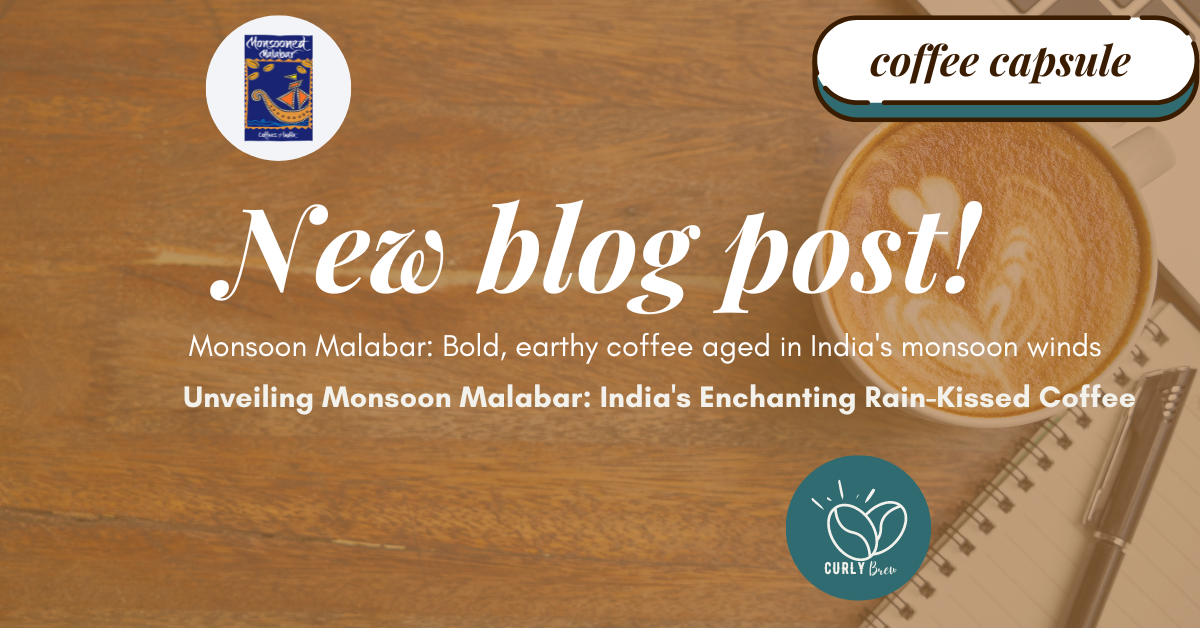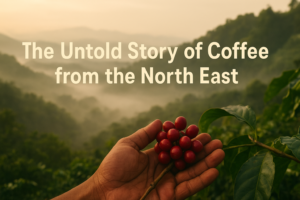
Monsoon Malabar coffee is one of the most unique and distinctive coffees in the world. Originating from the Malabar Coast of India, this coffee has a rich history and an intriguing processing method that gives it its characteristic flavor profile. Let’s dive into the fascinating world of Monsoon Malabar coffee.
The Origins
Monsoon Malabar coffee is cultivated in the southwestern coastal regions of India, particularly in Karnataka, Kerala, and the Nilgiri mountains of Tamil Nadu. The name “Monsoon Malabar” is derived from the region and the unique monsoon process that the beans undergo.
The Unique Monsooning Process
The monsooning process is what sets Monsoon Malabar apart from other coffees. This traditional method dates back to the times when coffee was transported from India to Europe in wooden ships. During the long voyage, the beans were exposed to moist monsoon winds, which altered their physical and chemical properties, resulting in a distinctive flavor.
Today, the monsooning process is carefully replicated to achieve the same unique characteristics:
- Harvesting: The coffee beans are harvested and sorted to remove defects.
- Drying: The beans are sun-dried to reduce moisture content to about 11%.
- Storing: The beans are then stored in warehouses during the monsoon season, where they are exposed to the moisture-laden winds from the Indian Ocean.
- Monsooning: The beans are spread out in layers and regularly raked and turned over for 12 to 16 weeks. This exposure to the monsoon winds causes the beans to swell and turn a pale yellow color.
- Sorting and Grading: After monsooning, the beans are once again sorted and graded to ensure quality.
Flavor Profile
The monsooning process significantly impacts the flavor and aroma of the coffee. Monsoon Malabar coffee is known for its:
- Low Acidity: The monsooning process reduces the acidity, making it a smooth and mellow coffee.
- Full Body: It has a rich, full-bodied texture with a creamy mouthfeel.
- Earthy and Spicy Notes: The coffee exhibits unique earthy and spicy flavors with hints of nuts, chocolate, and a subtle sweetness.
Brewing Monsoon Malabar
Monsoon Malabar coffee is versatile and can be enjoyed using various brewing methods. Here are some popular ways to brew it:
- Espresso: Its low acidity and full body make it an excellent choice for espresso, resulting in a smooth, rich shot with a thick crema.
- French Press: This method enhances its earthy and spicy notes, producing a robust and flavorful cup.
- Pour Over: A pour-over allows for a more nuanced extraction, highlighting its subtle sweetness and complexity.
Pairing Suggestions
Monsoon Malabar coffee pairs well with a variety of foods, enhancing the overall tasting experience. Some great pairings include:
- Dark Chocolate: The coffee’s earthy and nutty notes complement the bitterness of dark chocolate.
- Spiced Pastries: Pastries with cinnamon, cardamom, or nutmeg highlight the coffee’s spicy undertones.
- Cheese: Aged cheeses like Gouda or Cheddar can balance the coffee’s rich body and bring out its subtle sweetness.
Conclusion
Monsoon Malabar coffee is a testament to the rich coffee heritage of India and the unique processing methods that have been preserved over centuries. Its distinctive flavor profile and smooth, full-bodied texture make it a favorite among coffee connoisseurs worldwide. Whether you’re a seasoned coffee enthusiast or a curious newcomer, Monsoon Malabar coffee offers a truly unique and enjoyable coffee experience.
So, the next time you seek a coffee adventure, give Monsoon Malabar a try and savor the flavors of India’s monsoon winds in every cup.







